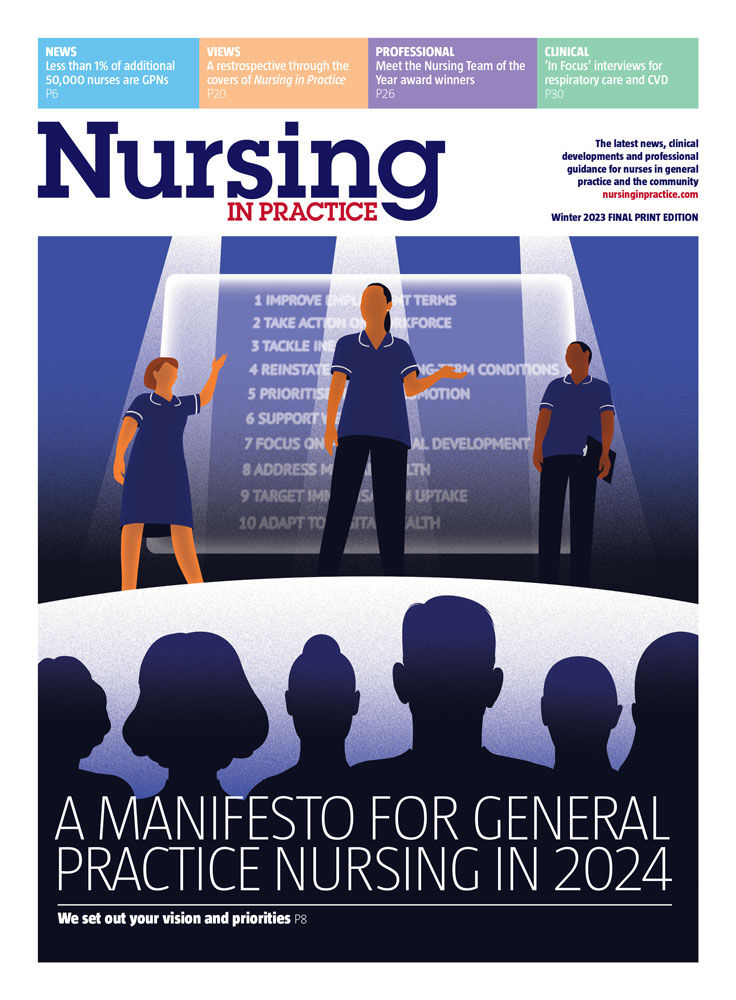Every time I see a patient who has been prescribed inhaled therapy, I take the time to check their inhaler technique. This can be a little awkward, as we all know that some patients can feel patronised or frustrated at being asked the same questions time and time again, especially if they were last admitted not very long ago.
But during my nine years working as a respiratory clinical nurse specialist, I have learnt that it is actually unsafe to assume that all patients have a good inhaler technique. Over the past decade, we have seen signs that health care practitioners often face difficulties teaching inhaler technique. In fact, a study of 150 health care practitioners in 2010 showed that as many as 9 in 10 could not demonstrate all of the steps in correctly checking inhaler technique.
The nurse’s role
As nurses, we need to feel confident in checking inhaler technique, and make sure that we are up to date on the best and most relevant resources for supporting patients. We can help lead the way in optimising their inhaler technique and maximise the benefit of their medication by asking patients at every contact. Of course, while it’s easy as a clinician to demonstrate how they should be using their inhaler, you still have to work with the reality of instructing and reinforcing patients repeatedly.
We should be advocating for what works for them and using different teaching aids for them to learn the correct inhaler technique. That’s why, when addressing the issue, I always take the time to check if patients have really understood how to use their inhaler, and ask them to demonstrate their inhaler technique. It can be easy to assume that they were taught correctly in the past, but as awareness remains low, we have to take every precaution we can, as therapies can change, new devices are available and patients may not have been told to wash their mouth after using a inhaled steroid inhaler. There are so many ways in which an inhaler technique check can benefit a patient, and teach us as clinicians where their knowledge gaps lie.
The patient experience
Something I am conscious of is the fact that when a patient is initiated to a new inhaler, a lot of new information is provided. This can be overwhelming, so it is important to direct patients to resources they can use to refresh their memory. Not every patient will have come in specifically to get their inhaler technique checked, so I always try to give them written information as well as video links they can refer to after their appointment. Notably, the Taskforce for Lung Health recently conducted a patient audit and found that the Asthma UK videos demonstrating correct inhaler technique were particularly helpful and easy to understand for asthma patients on inhaled therapy.
Another issue I have noticed is that when patients observe improved symptoms from using their preventative inhalers, they often stop using the treatment. They don’t necessarily realise that the therapy takes a few weeks or a few months for it to get to its optimum, and that it won’t work instantly. If this is the case, patients restarting the use of their inhalers will require a refresher. But patients aren’t alone in needing regular refreshers when it comes to inhaler technique. Staying up to date as nurses is also incredibly important. In trusts I have worked in, updates from pharmacists and healthcare professionals help educate us on the latest treatments. A part of our role is to provide a study day for nurses starting on acute, medical or respiratory wards, which covers inhaler technique along with respiratory disease management.
However, because there is a large range of inhalers available, the Taskforce for Lung Health is now trying to spread awareness of the UK Inhaler Group standards for standardisation of teaching and assessment of inhaler technique. The seven steps for using an inhaler device illustrate the basic steps that are applicable to all inhaler devices, and can help you build a foundation for teaching inhaler technique. This document is intended to be used as a framework to set, assess and support the standards of those initiating inhaler therapies and checking inhaler techniques. Its creation is a promising step as it shows how – despite some of the challenges we have faced in this space – we are moving forward and taking the time to collectively create resources to tackle this issue.
Nurses can help drive forward changes in the way inhaled therapies are perceived, understood and taught by raising awareness of correct inhaler technique, and overcoming any awkwardness we may feel in repeatedly checking the inhaler technique of our patients.
Resources








